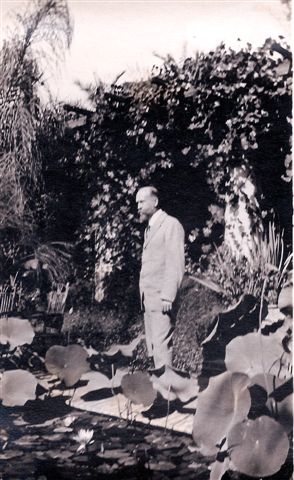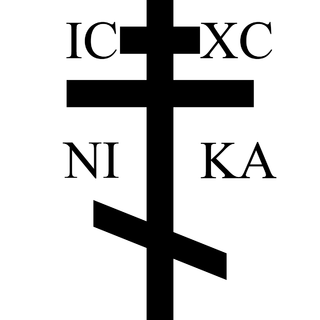
Helena Petrovna Blavatsky, often known as Madame Blavatsky, was a Russian and American mystic and author who co-founded the Theosophical Society in 1875. She gained an international following as the primary founder of Theosophy as a belief system.

Alice Ann Bailey was a writer of more than twenty-four books on theosophical subjects, and was one of the first writers to use the term New Age. Bailey was born as Alice La Trobe-Bateman, in Manchester, England. She moved to the United States in 1907, where she spent most of her life as a writer and teacher.

Ascended masters in a number of movements in the theosophical tradition are held to be spiritually enlightened beings who in past incarnations were ordinary humans, but who have undergone a series of spiritual transformations originally called initiations.

Alfred Percy Sinnett was an English author and theosophist.
A Treatise on White Magic is a book by Alice Bailey. It is considered to be among the most important by students of her writings, as it is less abstract than most, and deals with many important subjects of her works in an introductory, even programmatic fashion. It was first published in 1934 with the subtitle 'The Way of the Disciple'. She promulgated White Magic as a discipline to serve humanity.

The Book of Dzyan is a reputedly ancient text of Tibetan origin. The Stanzas formed the basis for The Secret Doctrine (1888), one of the foundational works of the theosophical movement, by Helena Petrovna Blavatsky. The book has influenced writers in the ancient astronaut, occult and UFO communities. Historians and skeptics have dismissed the Book of Dzyan as a hoax and have accused Blavatsky of plagiarism.

Morya, also spelt Maurya, is one of the "Masters of the Ancient Wisdom" within modern Theosophical beliefs. He is believed by followers of Theosophism to be one of the Mahatmas who inspired the founding of the Theosophical Society and was engaged in a correspondence with two English Theosophists living in India, A. P. Sinnett and A. O. Hume. The correspondence was published in 1923 by A. Trevor Barker, in the book The Mahatma Letters to A. P. Sinnett.

Koot Hoomi is said to be one of the Mahatmas that inspired the founding of the Theosophical Society in 1875. In Theosophy it is believed that he engaged in a correspondence with two English Theosophists living in India, A. P. Sinnett and A. O. Hume, which correspondence was published in the book The Mahatma Letters to A. P. Sinnett.

The Mahatma Letters to A.P. Sinnett is a book published in 1923 by A. Trevor Barker. (ISBN 1-55700-086-7) According to Theosophical teachings, the letters were written between 1880 and 1884 by Koot Hoomi and Morya to A. P. Sinnett. The letters were previously quoted in several theosophical books, but not published in full. The letters were important to the movement due to their discussions on the theosophical cosmos and spiritual hierarchy. From 1939, the original letters were in the possession of the British Museum but later the British Library.

Theosophical teachings have borrowed some concepts and terms from Buddhism. Some theosophists like Helena Blavatsky, Helena Roerich and Henry Steel Olcott also became Buddhists. Henry Steel Olcott helped shape the design of the Buddhist flag. Tibetan Buddhism was popularised in the West at first mainly by Theosophists including Evans-Wentz and Alexandra David-Neel.

Neo-Theosophy is a term, originally derogatory, used by the followers of Helena Blavatsky to denominate the system of Theosophical ideas expounded by Annie Besant and Charles Webster Leadbeater following the death of Madame Blavatsky in 1891. This material differed in major respects from Blavatsky's original presentation, but it is accepted as genuinely Theosophical by many Theosophists around the world.
The Master Hilarion is considered a saint within the I AM movement, one of the "Masters of the Ancient Wisdom", and in the Ascended Master Teachings is one of the Ascended Masters. He is considered to be the Chohan (Lord) of the Fifth Ray.
Master Jesus is the theosophical concept of Jesus in theosophy and the Ascended Master Teachings.

The Lucis Trust is a nonprofit service organization incorporated in the United States in 1922 by Alice Bailey and her husband Foster Bailey, to act as a fiduciary trust for the publishing of twenty-four books of esoteric philosophy published under Alice Bailey's name, and to fund and administer activities concerned with the establishment of "right human relations". These include the Arcane School, a school for esoteric training, World Goodwill, Triangles, a lending library, The Beacon magazine, as well as the publishing company.

Krotona was one of three important Theosophical centers in the United States during the early part of the 20th century. Originally built in Hollywood during 1912, the colony was eventually relocated to Ojai, California, in 1926, where it operates today as the Krotona Institute of Theosophy.
The Great White Brotherhood, in belief systems akin to Theosophy and New Age, are said to be perfected beings of great power who spread spiritual teachings through selected humans. The members of the Brotherhood may be known as the Masters of the Ancient Wisdom, the Ascended Masters, the Church Invisible, or simply as the Hierarchy. The first person to talk about them in the West was Helena Petrovna Blavatsky (Theosophy), after she and other people claimed to have received messages from them. These included Helena Roerich, Alice A. Bailey, Guy Ballard, Geraldine Innocente, Elizabeth Clare Prophet, Bob Sanders, and Benjamin Creme.

In Theosophy, Maitreya or Lord Maitreya is an advanced spiritual entity and high-ranking member of a reputed hidden spiritual hierarchy, the Masters of the Ancient Wisdom. According to Theosophical doctrine, one of the hierarchy's functions is to oversee the evolution of humankind; in concert with this function Maitreya is said to hold the "Office of the World Teacher". Theosophical texts posit that the purpose of this Office is to facilitate the transfer of knowledge about the true constitution and workings of Existence to humankind. Humanity is thereby assisted on its presumed cyclical, but ever progressive, evolutionary path. Reputedly, one way the knowledge transfer is accomplished is by Maitreya occasionally manifesting or incarnating in the physical realm; the manifested entity then assumes the role of World Teacher of Humankind.

Within the system of Theosophy, developed by occultist Helena Blavatsky and others since the second half of the 19th century, Theosophical mysticism draws upon various existing disciplines and mystical models, including Neo-platonism, Gnosticism, Western esotericism, Freemasonry, Hinduism and Buddhism.

Theosophy is a religious and philosophical system established in the United States in the late 19th century. Founded primarily by Russian mystic and spiritualist Helena Blavatsky, and based largely on her writings, it draws heavily from both older European philosophies such as Gnosticism and Neoplatonism and Indian religions such as Hinduism and Buddhism. Although many adherents maintain that Theosophy is not a religion, it is variably categorized by religious scholars as both a new religious movement and a form occultism from within Western esotericism.

Christianity and Theosophy, for more than a hundred years, have had a "complex and sometimes troubled" relationship. The Christian faith was the native religion of the great majority of Western Theosophists, but many came to Theosophy through a process of opposition to Christianity. According to professor Robert S. Ellwood, "the whole matter has been a divisive issue within Theosophy."










